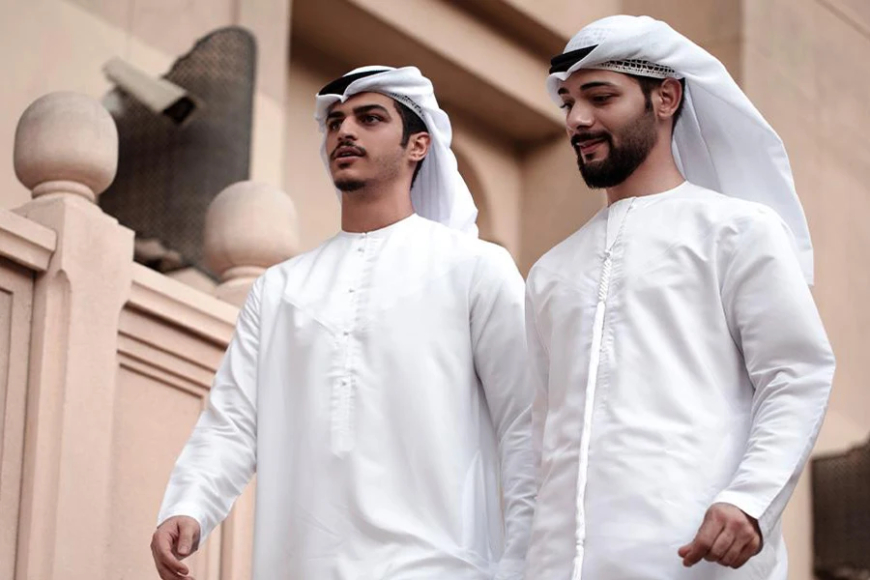Discovering the Beauty of Traditional Thobes in the UK

Step into the world of timeless elegance and cultural heritage as we explore the beauty of traditional thobes in the UK. From intricate embroidery to luxurious fabrics, these iconic garments are not just a piece of clothing, but a symbol of tradition and style. Join us on a journey through history and fashion as we uncover the allure of thobes in the modern world.
Introduction to Thobes and their origins
Thobes UK, also known as thawbs or dishdashas, are traditional long-sleeved robes that are commonly worn by men in the Middle East and other parts of the Arab world. These garments have a rich history and cultural significance that goes back centuries. In recent years, thobes have gained popularity in countries like the UK as a fashion statement and symbol of cultural identity.
Origins of Thobes
The origins of thobes can be traced back to ancient Mesopotamia, where loose-fitting garments made from linen were worn by both men and women. As trade routes expanded between Mesopotamia and other regions, this style of clothing spread throughout the Middle East. During the Islamic era, these loose robes were adopted by Arab men as their primary attire.
Symbolism of Thobes
They hold great cultural significance for many people in the Middle East. They represent tradition, modesty, humility, and respect for one's heritage. The color white is often associated with purity and cleanliness in Islam; hence it became a popular choice for thobe fabric.
Types of Thobes
Over time, different cultures within the Arab world developed their own versions of thobe designs based on climate conditions or personal preference. For example:
The Modern Thobe
In recent years, thobes have evolved to cater to modern styles while still retaining their cultural significance. In countries like the UK, trendy variations of thobes are gaining popularity among men of all backgrounds. These include slim-fit designs, shorter lengths, and bolder colors or patterns.
Conclusion
Thobes are more than just garments; they represent a rich history and cultural identity that continues to thrive in today's society. As we discover the beauty of traditional thobes in the UK, it is essential to understand their origins and symbolism to appreciate them fully. Whether worn as formal attire or as a fashion statement, thobes serve as a reminder of the values of modesty and tradition that hold
The Growing Popularity of Thobes in the UK
Thobes have been a staple garment in the Middle Eastern and African regions for centuries, but recently, they have gained immense popularity in the UK. These traditional garments are now being embraced by people of all backgrounds and cultures, making their way from traditional wear to mainstream fashion.
The Different Types of Traditional Thobes in the UK
The traditional thobe, also known as the thawb or dishdasha, is a long and loose garment commonly worn by men in countries such as Saudi Arabia, Oman, and Qatar. However, with the growing diversity of cultures in the UK, traditional thobes have also become a popular fashion choice for many British Muslims and non-Muslims alike.
1. The Saudi Thobe: This type of thobe is typically white in color and made from lightweight fabric to keep its wearer comfortable in the hot weather. It is often embellished with intricate embroidery along the neckline and cuffs, making it a popular choice for special occasions such as weddings or religious festivals.
2. The Omani Thobe: Originating from Oman, this type of thobe is characterized by its wide sleeves and colorful tassels at the neck. It comes in various colors and can be made from luxurious fabrics such as silk or cotton.
3. The Qatari Thobe: Similar to the Saudi thobe in terms of color and design, but with one distinct feature – a triangular-shaped collar called a “bisht”. This bisht is usually adorned with gold thread embroidery and adds an elegant touch to this type of thobe.
4. The Moroccan Jellaba: While not technically considered a thobe, the jellaba shares similar characteristics such as being loose-fitting and floor-length. It is primarily worn by North African communities living in the UK and often features bold patterns or vibrant colors.
5.The Palestinian Thobe: Also known as “thoub”, this type of thobe is typically embroidered with intricate designs on both sides of the chest area. It may also feature colorful tassels on the sleeves and hem, making it a popular choice for celebratory events in Palestinian communities.
How to Style and Wear a Thobe
Thobes are traditional, ankle-length garments that are commonly worn by men in Middle Eastern countries. However, in recent years, thobes have gained popularity and can now be seen being worn by people all over the world. In the UK specifically, thobes have become a fashion statement for many individuals who appreciate their unique style and cultural significance.
1. Choose the Right Fabric
The first step in styling a thobe is selecting the right fabric. Thobes are typically made from lightweight cotton or linen materials which make them breathable and comfortable to wear in hot weather. However, there are also options available in heavier fabrics such as wool for colder climates.
2. Find Your Fit
Thobes come in a variety of styles and sizes, so it's important to find one that fits your body well. Some popular styles include slim fit, regular fit, and oversized. To ensure a proper fit, make sure the shoulders sit comfortably without being too tight or loose. The sleeves should end just below your wrists with enough room for movement.
3. Accessorize Wisely
One of the best things about thobes is that they can be dressed up or down depending on your personal style. For a more formal look, consider accessorizing with a waistcoat or vest over your thobe. You can also add a touch of color with a patterned scarf or Shelagh around your neck.
4. Master the Art of Layering
Layering is key when it comes to styling thobes as it adds dimension and depth to your outfit. A tailored blazer or jacket paired with your thobe can elevate your look and make it suitable for a variety of occasions.
5. Experiment with Different Colors and Patterns
Thobes are no longer limited to the traditional white or beige colors. In fact, they now come in a wide range of vibrant hues and unique patterns, making them perfect for expressing personal style. Don't be afraid to try something new and incorporate some color or pattern into your thobe wardrobe.
6. Pay Attention to Footwear
The type of footwear you choose can make or break an outfit when wearing a thobe. For a more formal look, opt for leather shoes or loafers. If you're going for a more casual vibe, sandals or slip-on shoes can pair well with a thobe.
Where to Buy Authentic Thobes in the UK?
Thobes are traditional garments worn by men in many Middle Eastern and North African countries. They are typically ankle-length, loose-fitting robes that come in a variety of colors and styles. Thobes have gained popularity around the world for their unique designs and cultural significance. If you're looking to buy an authentic thobe in the UK, there are several options available.
1. Online Stores:
One of the easiest ways to purchase an authentic thobe in the UK is through online stores. There are numerous websites that specialize in selling traditional clothing from various cultures, including thobes. These online stores offer a wide range of designs and sizes to choose from, making it convenient for customers to find exactly what they're looking for. Some popular online stores that sell authentic thobes include Modest Path, Desert Store, and Islamic Design House.
2. Local Markets:
Another great option for buying an authentic thobe in the UK is to visit local markets or bazaars that cater to Middle Eastern communities. These markets often have stalls or shops that sell traditional clothing from different cultures, including thobes. Visiting these markets not only gives you a chance to browse through a wide selection of thobes but also allows you to interact with vendors who can offer valuable insights on the garment's cultural significance.
3. Specialty Stores:
There are also specialty stores across the UK that specifically sell traditional Middle Eastern clothing such as thobes. These stores usually have a wider selection compared to local markets and may even offer customization services for those looking for a more personalized touch on their purchase.
4.Well-known Brands:
Some well-known brands have also started incorporating traditional Middle Eastern garments into their collections due to their increasing popularity worldwide. High-end fashion brands like Dolce & Gabbana and Roberto Cavalli have released collections featuring modern interpretations of traditional thobes.
5.Shopping Abroad:
If none of the above options work for you, another alternative is to purchase an authentic thobe while traveling abroad. Countries like Saudi Arabia, UAE, and Egypt have a rich history and culture surrounding thobes, making it the perfect place to buy one. You can find a variety of designs and quality thobes in local markets or malls across these countries.
The Cultural Significance and Symbolism Behind Thobes
Thobes, also known as thwab or dishdasha, are traditional garments worn by men in many Middle Eastern and Arab countries. They are a symbol of cultural identity and have been an integral part of the region's heritage for centuries. In recent years, thobes have gained popularity in the UK and have become a fashion statement for many Muslim communities.
Modern Takes on Traditional Thobe Designs
In recent years, traditional thobes have undergone a transformation with modern interpretations and designs making their way into the fashion world. These modern takes on traditional thobe designs have gained popularity not just in the UK, but across the globe.
Conclusion: Embracing Diversity through Fashion
Embracing diversity through fashion is not only a way to celebrate different cultures and traditions, but it also has the power to bring people together and promote understanding and acceptance.
What's Your Reaction?
 Like
0
Like
0
 Dislike
0
Dislike
0
 Love
0
Love
0
 Funny
0
Funny
0
 Angry
0
Angry
0
 Sad
0
Sad
0
 Wow
0
Wow
0






















































